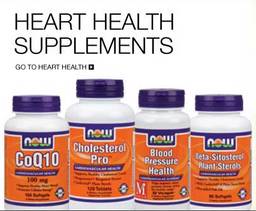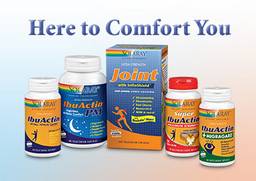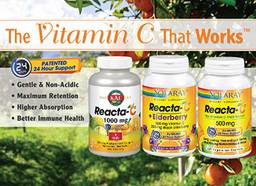|
Search Term: " DEOD "
Long-Lasting Deodorant for the Underarms and Feet
Date:
October 29, 2022 09:41 AM
Let's face it, no one likes to be smelly. Whether you're at the gym, at work, or out on a date, you want to make sure that you smell your best. That's why we're excited to introduce our new unscented long-lasting DEODorant. Formulated with the odor-fighting properties of zinc oxide, this DEODorant offers amazing protection that you can count on to feel fresh throughout the day. So if you're in need of a little extra odor protection, be sure to give our new DEODorant a try! How It Works DEODorants work by masking or neutralizing the odors associated with sweat. They usually contain a combination of fragrances, alcohols, and other ingredients that work together to cover up body odor. Antiperspirants, on the other hand, work by temporarily blocking the pores and reducing sweat production. This can be helpful for people who tend to sweat a lot or who have particularly sensitive skin. Most commercial DEODorants and antiperspirants contain aluminum chloride, which has been linked to health concerns such as Alzheimer's disease and breast cancer. However, there is no definitive evidence that aluminum chloride causes these conditions. If you're concerned about the aluminum in your DEODorant, there are many aluminum-free options available on the market. Our new unscented long-lasting DEODorant is made with zinc oxide, which is a safe and effective alternative to aluminum chloride. Zinc oxide works by absorbing sweat and neutralizing odor-causing bacteria. It also has antiperspirant properties that help reduce sweating. This makes it an ideal choice for people who are looking for long-lasting odor protection. If you're in need of a little extra odor protection, our new unscented long-lasting DEODorant is perfect for you! Made with zinc oxide, it offers superior protection against body odor without the use of aluminum chloride. So if you're looking for an alternative to traditional DEODorants and antiperspirants, give our new product a try! You won't be disappointed!
(https://vitanetonline.com:443/forums/Index.cfm?CFApp=1&Message_ID=6548) How to Know if You Need Long-Lasting Deodorant Protection
Date:
October 29, 2022 09:40 AM
NOW® Solutions long-lasting DEODorant is scientifically formulated, combining the odor-fighting properties of zinc oxide with the floral notes of rose and ylang ylang. It offers amazing protection that you can count on to feel fresh throughout the day. But how do you know if you need long-lasting odor protection? Here are a few telltale signs: Body odor that persists even after bathing Intense body odor that causes people to take notice (and not in a good way) Excessive sweating that leads to chafing and discomfort If any of these sound familiar, then NOW® Solutions long-lasting DEODorant is right for you. Keep reading to learn more about this product and how it can help you feel your best. What is NOW® Solutions Long-Lasting DEODorant? NOW® Solutions long-lasting DEODorant is an all-natural, aluminum-free DEODorant that uses zinc oxide—a naturally occurring mineral with astringent, antiseptic, and absorbent properties—to help control body odor. Zinc oxide has been used for centuries for its ability to soothe and protect the skin, making it an ideal choice for those with sensitive skin. Combined with the floral notes of rose and ylang ylang, NOW® Solutions long-lasting DEODorant offers a refreshing scent that will leave you feeling refreshed and confident all day long. And because it's aluminum-free, you can rest assured knowing that NOW® Solutions long-lasting DEODorant is safe for your skin. How Does NOW® SolutionsLong-Lasting DEODorant Work? The science behind NOW® Solutions long-lasting DEODorant is simple but effective. When applied to the skin, zinc oxide creates a barrier that helps to absorb wetness and inhibits the growth of bacteria—the main cause of body odor. At the same time, the natural oils in rose and ylang ylang work to mask any existing body odor while also providing a pleasant scent. Together, these ingredients offer complete protection against body odor—all day long! Body odor is never fun—for you or those around you. If you're looking for a natural solution that will keep you feeling fresh all day long, look no further than NOW® Solutions long-lasting DEODorant. Formulated with zinc oxide and essential oils, NOW® Solutions long - lasting DEODorant provides complete protection against body odor without the use of harsh chemicals or aluminum. So why wait? Give NOW® Solutions long - lasting DEODorant a try today!
(https://vitanetonline.com:443/forums/Index.cfm?CFApp=1&Message_ID=6547) Is your body in need of long-lasting odor protection?
Date:
October 29, 2022 09:39 AM
Underarm and foot odor can be a real problem, especially in the summer months when we are more active and tend to sweat more. NO Solutions long-lasting DEODorant is a great option for anyone looking for a natural, long-lasting solution to this problem. Formulated with zinc oxide and essential oils, it provides effective, all-day protection against body odor. What Causes Underarm and Foot Odor? Underarm and foot odor are caused by the bacteria that live on our skin. When we sweat, the bacteria break down the sweat into acids, which can cause an unpleasant odor. Antiperspirants work by blocking the pores and preventing sweat from being secreted onto the surface of the skin. However, many antiperspirants contain aluminum, which has been linked to health concerns such as breast cancer and Alzheimer's disease. NO Solutions long-lasting DEODorant is a great aluminum-free alternative for those looking for effective, natural underarm and foot protection. The zinc oxide works to absorb excess moisture while the essential oils kill bacteria and help to neutralize odors. This unique formula provides long-lasting protection against underarm and foot odor without any of the health concerns associated with aluminum-based antiperspirants. If you are looking for a natural, long-lasting solution to underarm or foot odor, NOW Solutions long-lasting DEODorant is a great option. Formulated with zinc oxide and essential oils, it provides effective protection against body odor without any of the health concerns associated with aluminum-based antiperspirants. Give it a try today!
(https://vitanetonline.com:443/forums/Index.cfm?CFApp=1&Message_ID=6546) Body Odor and the Need for All Natural Deodorant
Date:
October 10, 2022 12:09 PM
Let's be honest, no one likes to talk about body odor. It's an embarrassing topic that most people would rather not think about, let alone discuss openly. However, the fact of the matter is that body odor is a real problem that affects us all. The good news is, there are steps we can take to minimize or eliminate body odor. One such solution is to use an all natural DEODorant. What Causes Body Odor? There are two main causes of body odor: sweat and bacteria. When sweat mixes with bacteria on the skin, it can produce an unpleasant smell. Some people are more prone to body odor than others due to factors like genetic disposition, diet, health conditions, and medications. Regardless of the cause, nobody wants to deal with unwanted body odor. The Solution: All Natural DEODorant One way to combat body odor is to use an all natural DEODorant. All natural DEODorants are free of harsh chemicals, oils, alcohol, preservatives, and harmful forms of aluminum. Many commercial DEODorants contain these harsh chemicals which can actually exacerbate body odor. All natural DEODorants work by leaving a thin layer of odor-controlling mineral salts on the skin to offer long-lasting protection against body odors. Mineral DEODorant crystals have been proven to be highly effective in protecting against body odors. In Summary: If you're looking for a safe and effective way to combat body odor, look no further than all natural DEODorant. This type of DEODorant leaves a thin layer of odor-controlling mineral salts on the skin to offer long-lasting protection against body odors. So if you're tired of feeling self-conscious about your body odor, give all natural DEODorant a try!
(https://vitanetonline.com:443/forums/Index.cfm?CFApp=1&Message_ID=6492) 3 Natural Remedies That You Can Use To Clean Your Armpits!!
Date:
January 17, 2018 10:59 AM
If you do not want to use DEODorant that bleaches your armpits over time then you can try any of these three natural solutions for removing stains in your under arms. The first is baking soda (sodium bicarbonate) is a great exfoliant and coconut oil is a natural antimicrobial and will help hydrate your skin. Combine 2 tablespoons of baking soda and a spoonful of virgin coconut oil and apply the mixture three times a week, scrub, soak for 15 minutes and rinse with warm water. You can adjust the ratio of coconut oil and baking soda to your liking. The next remedy is dried orange-peel (exfoliant and antibacterial) and rose water (rejuvenating properties). Make a paste out of two tablespoons of dried orange-peel, a teaspoon of rose water and a teaspoon of milk. Apply the paste to your skin, scrub, soak for 15 minutes, rinse and repeat the process every other day. The third option is lemon juice (antibacterial) and sugar (exfoliant). Mix a spoonful of lemon juice and a teaspoon of sugar together to make a paste. Apply the mixture, scrub, soak for 15 minutes, rinse with warm water, repeat 3-4 times a week. Apply a moisturizer afterwards. https://www.youtube.com/watch?v=nkJahynv6Fo&rel=0
(https://vitanetonline.com:443/forums/Index.cfm?CFApp=1&Message_ID=5492) Why You Should Switch to Natural Deodorant
Date:
January 10, 2018 10:59 AM
Antiperspirants contain aluminum salts. Aluminum in certain quantities can be harmful. This includes a link to Alzheimer’s and decreased brain function. Aluminum exposure is all around us. A study determined aluminum can be found in our bodies up to fifteen days after using a traditional antiperspirant. Switching to an all natural DEODorant can help reduce the amount of aluminum intake our bodies receive. Recipes are included to make DEODorant at home with all natural ingredients. https://www.youtube.com/watch?v=hLix7144iA4&rel=0
(https://vitanetonline.com:443/forums/Index.cfm?CFApp=1&Message_ID=5487) Mix these three ingredients and Get Rid of Body Odor INSTANTLY!!
Date:
September 03, 2017 12:14 PM
You can mix only three ingredients together and get rid of body odor almost instantly. There are many DEODorants on the market that help us fight sweat, but many of them do not meet our expectations, or give us what we need. Creating your own natural DEODorant is a great thing to try. You will need some baking soda and corn starch and coconut oil as well. You will need to mix the ingredients together. https://www.youtube.com/watch?v=o0I7yzM3zy4&rel=0Key Takeaways:
"Few knows that antiperspirants contain a substance that clogs the sweat glands disrupting their normal functioning."
(https://vitanetonline.com:443/forums/Index.cfm?CFApp=1&Message_ID=5214) Cooking With Canola Releases More Toxic Cancer-Causing Chemicals Than Any Other Type of Oil
Date:
March 14, 2017 01:59 PM
Canola oil is extracted from rapeseed and despite claims that it's healthy, it's actually the worst type of oil you can use. Most canola oil is made from genetically modified crops and the modification actually increases risks to health including causing cancer. Oil made from rapeseed used to be used as an industrial lubricant and canola can be used as a pesticide. It's important to also know that the oil is hydrogenated and can cause cardiac risks. Key Takeaways:
"In a nutshell, healthy living and canola oil simply don’t go well together." Reference: //www.healthnutnews.com/cooking-canola-releases-toxic-cancer-causing-chemicals-type-oil/
(https://vitanetonline.com:443/forums/Index.cfm?CFApp=1&Message_ID=4148) People can use DE
Date:
September 16, 2016 05:41 PM
Diatomaceous Earth (DE) is safe to consume internally and sprinkle around externally. DE can be used as a natural DEODorizer for garbage cans, vacuum cleaner bags and refrigerators. Polishing jewelry You can polish silver and jewelry by mixing DE in water to form a paste. Apply then remove with a dry cloth. Facial mask For a facial mask mix DE with water or oil to make a paste. Apply in a circular motion. Leave on for five minutes, then wash off the warm water. Polish your Teeth Sprinkle a small amount of DE on toothpaste for vigorous tooth polishing. Strengthen Nails Mix DE with your favorite oil for nail soak to strengthen your nails. Internal use amounts The recommended dosage is 2% of dry weight. One teaspoon of DE weighs 1/10 of an ounce. Four cups of food weighs, on average, one pound. If you consume four cups of food, you will use one tablespoon of DE. If you want to mix with water, use one teaspoon for every cup of water. Slowly work your way up in dosage so that you know your limits. Drink plenty of water when consuming 2 or more teaspoons daily. Have fun and enjoy a better life with DE.
(https://vitanetonline.com:443/forums/Index.cfm?CFApp=1&Message_ID=3295) Diatomaceous Eart (DE) is Safe For All Kinds Of Pets
Date:
September 16, 2016 05:01 PM
Diatomaceous earth is composed of silicon dioxide (Silica). The U.S. government has allowed Diatomaceous earth for agriculture uses since the 1960's. With decades of use, Diatomaceous earth is very safe. Diatomaceous Earth (DE) Mixes well with kitten litter. Mix a handful of DE with litter. DE DEODorizes and absorbs moisture. DE is odorless so it will not deter cats from using the box. Lightly dust pets' bedding. DE will absorb oils, dirt, and smells. Keeps kennel area dry and odor free. Backyard Chickens love DE. It keeps their coops cleaner, drier and odor free. Anywhere you want to DEODorize sprinkle Some DE there.
(https://vitanetonline.com:443/forums/Index.cfm?CFApp=1&Message_ID=3294) Can I Use Tea Tree Oil As A Deodorant?
Date:
September 16, 2015 09:40 PM
Most people use DEODorant to control their body odor. But what they don’t know is the several hazards it causes. People usually apply these deo sprays under their armpits and over their body to control sweat and body odor. But these causes several health issues that should never be ignored. Hazardous ingredients in DEODorants Some of the common substances used in DEODorants include Parabens, aluminum, Triclosan, etc. Aluminum causes several health issues such as kidney problems, seizures, breast cancer, bone formation disorder, etc. Alzheimer and Down syndrome are also results of aluminum which people using these chemical DEODorants suffer from. Apart from this, most deo sprays available in the market use parabens. These Parabens often mimic estrogen in the body, thereby disturbing the hormonal balance. It can cause hormonal cancer, early onset of puberty and more. If that’s not all, these DEODorants also cause birth defects in unborn children. Along with this, the Triclosan included in body sprays also cause cancer, several allergies and fever. Will these cause health problems? There are numerous studies that show how DEODorants and antiperspirants cause health issues. These can either be in the form of allergies to serious health hazards such as cancer. The chemicals used in these are extremely harmful for the body since it blocks the sweat glands. Using tea tree oil as an alternative The best thing is to use natural DEODorants such as tea tree oil. It has several antiseptic properties that work well to control body odor. But the best thing about this essential oil, it is extremely safe to use and doesn't have any side effects. You can use it on your skin without worrying about the side effects. Since tea tree oil can cause minor skin irritation in some people, it is always a good idea to use diluted oil under the arm pits. It works extremely well to mask odor and stays longer on your body, unlike DEODorants. It also removes body odor once and for all, with regular use. References //www.intoxicatedonlife.com/2013/11/05/5-surprising-hazards-using-DEODorant-solution/ //www.diynatural.com/natural-homemade-DEODorant/ //www.pua-zone.com/showthread.php?341-Teatree-Oil-DEODorant-Alternative
(https://vitanetonline.com:443/forums/Index.cfm?CFApp=1&Message_ID=3217) Why Should I Take Wheat Grass Liquid Concentrate?
Date:
December 10, 2014 11:03 PM
What is a wheat grass Wheat grass benefits Wheat grass concentrate This liquid concentrate is packed with nutrients equivalent to five pounds of raw, green organic vegetables, all in just two ounces of juice. It is higher in vitamins A and C than what you would get in a serving of carrots or oranges, and has a full spectrum of B vitamins as well, and a balanced ratio of calcium, magnesium, sodium, potassium and phosphorus altogether. Wheat grass contains enzymes that detoxify the body, especially the blood and liver, neutralizing harmful pollutants like heavy metals and toxins that enter the body, which could be stored in tissues and organs, therefore cleansing the body from head to toe. This juice is also a resource of life-force energy that gives one renewed spiritual effects on his inner being. It battles premature aging and it keeps the hair from graying out making you look younger. Not only does it boosts the immune system by giving strength, vitality and endurance, but has wonderful effects on the body. It can cure acne and may help remove scars left if drank regularly for a few months. It acts, as a natural DEODorizer hence can be a body DEODorant. It can prevent tooth decay and even soothe toothaches and sore throat. It aids in skin problems like psoriasis or eczema. It helps in achieving regular bowel movement. It is gluten-free. Taking wheat grass liquid concentrate has no reported side effects or toxic in any amount given to either humans or animals, mainly because it is at its finest and most natural form, making it the ideal supplement to take nowadays. References
(https://vitanetonline.com:443/forums/Index.cfm?CFApp=1&Message_ID=3163) Lavilin Deodorant reviews.
Date:
March 04, 2014 09:03 AM
Lavilin DEODorant
Active ingredients.
Aluminium-some DEODorants contains aluminium which causes breast cancer and Alzheimer. Most of the ingredients are from natural sources. This makes Lavilin a premier DEODorants. It is also free from Parabens, though most anti-perspirants uses Parabens to improve shelf life, Lavilin uses natural methods. Parabens are very dangerous to our bodies since they can damage central nervous system, cause birth defects and endocrine disruption. It contains zero Propylene Glycol, Triclosan and Phthalates which are also very harmful to your health. It is also free from alcohol which damages skin pores and also causes blisters. DEODorants which contains alcohol will cause blisters and users will get irritation when they take bath. How it works. It works by eliminating bacteria that causes odor smell in your armpits. It does not prevent you from sweating, sweating is a very health process and any product that hinders normal body processes is definitely not good at all. Lavilin uses essential oils to eliminate bacteria and ensure your skin remains fresh and you have a good smell. Direction of use. This product should be used after taking shower. It has a good smell which will not work well if you have not taken bath. You can also use it after shaving, it does not cause irritations, it is very friendly. Upon it use, you will have fresh breath for more than 72 hours. It has a good smell and it will keep your skin fresh for more than 72 hours. It does not wear off easily even after taking a bath, it is promising product that will keep you confident for more than 4 days. Advantages. It is long lasting, upon wearing it, it will remain effective for more than 72 hours. You don’t need to use it daily. It is not affected by water, the scent will remain after taking bath. There is no strong smell, it scent is just friendly to you and other people. It is never shouty and only a person close to you will smell the scent. It does not stain clothes or make your armpits white. You clothes will not be discolored by use of Lavilin nor will your armpit get white color. You can use it after shaving, it does not cause blisters or irritations. It is very friendly. It is also very use, it has few and easy few to follow instructions. Shortfalls. Lavilin does not seem to be effective to men. It can last for more than 4 days when worn by a lady but for a man it will last for only three days. This call for regular use. Lavilin can be used by body builders or people taking strenuous exercise. It can also be used in nay weather, sunny, rainy or high humidity, it effectiveness is not lessened by weather condition. Sources
(https://vitanetonline.com:443/forums/Index.cfm?CFApp=1&Message_ID=3045) What Is Patchouli Oil?
Date:
February 22, 2014 08:12 AM
What is patchouli
Health benefits of patchouli Patchouli oil offers several health benefits including treating digestive conditions such as diarrhoea, nausea and vomiting, prevention of wrinkles, speeding healing of wounds and disappearance of bruises, fighting infection and healing snake bites. Elements of patchouli oil are found in many beauty and skin care products. Patchouli oil is very ornamental in preventing anxiety as well as a wide variety of allergies. It is used in herbal curing of hypertension, haemorrhoids, fluid retention and weight reduction. It is one of the major ingredients for treatment of depression. When patchouli oil is applied undiluted on the skin, it can improve the skin condition by smoothening sagging and chapped skin. It clears dandruffs on the head and deals with skin undesirable conditions such as acne, dermatitis and eczema. The oil is also used to reduce stress in therapeutic and aroma therapeutic healing. It contains several desirable properties including being anti- inflammatory, antifungal, relaxant, stimulant and insecticidal, a digestive aid, diuretic, tonic, decongestant, DEODorant, anti-infectious, antiseptic, antimicrobial and antitoxic. It is one of the most widely used products in medicine development. Patchouli oil is naturally sweet and attractive to use. It offers an inspiring scent that feels very sweet. Its influence is known to relax both the body and the mind. It has been used in spiritual healing for hundreds of years. It is used to align the heart chakra with the sacral and root chakras. In meditational healing, it helps people release insecurities, obsessions, and jealousness while enhancing one’s desire for a satisfying and fuller life. Sources
(https://vitanetonline.com:443/forums/Index.cfm?CFApp=1&Message_ID=3032) What Is Germanium Oil Good For?
Date:
February 18, 2014 06:37 AM
What is germanium
Some of it health benefits include Tonic properties It enables the entire body system to work well by affecting endocrine system, thus it regulates secretion of various enzymes, hormones, bile and acids. This ensures glands producing different substances do not under or over produce them. This is very important in ensuring better digestion, respiration, blood circulation and excretory systems works optimally. Vermifuge This property is very important for children who suffer from internal worms and also some adults. Germanium oil can help to eradicate internal worms such as ring worms. DEODorant Germanium oil has uplifting and a pleasant aroma. It is not harsh to the skin and it effects last for a long time. It also helps in eliminating body odor due to it antibacterial properties One of the advantage of using geranium oil as a DEODorant is that it circulate in the body such that all your body parts will produce a sweet aroma, unlike other DEODorants which are effective only at the point of application, germanium oil will be circulated throughout the body and exist during perspiration the time when body has an odor smell. Vulnerary properties It speeds up the healing process of surgical incision, cuts and wounds. This can be attributed to its various properties such as antibacterial properties, anti-microbial properties and styptic properties among others. Antibacterial and Antimicrobial Geranium essential oil prevent microbes and bacteria from developing on wound and also keeps body safe from other infections. Cicatrizing property Geranium essential oil is very effective in fighting acnes and stretch marks. It also helps in improving and maintaining skin tone, thus it will improve you appearance and consequently self-esteem. Source
(https://vitanetonline.com:443/forums/Index.cfm?CFApp=1&Message_ID=3023) The health benefits of citronella oil
Date:
February 14, 2014 10:23 PM
What is citronella
Insect repellant Citronella oil is effective in repelling insects such as mosquitoes, fleas, ticks and black flies and thus prevents its bites. The oil can be used on human and their clothing in form of liquid, oil or patch. This makes it a natural and non-toxic alternative to chemical insect repellants. It is also available in products like insect repelling candles and cartridges. Astringent If used well, citronella oil can help with oily skin as it is an astringent. You should apply a drop or two on the skin to test if it will cause irritation. You should then apply 2 to 3 drops of the oil to a cotton ball and wipe out any excess sweat. You should then complete your regular facial routine. Antibacterial Citronella oil contains methyl isoeugenol that help in its antibacterial property. The oil can kill and even inhibit the growth of bacteria in the body. Therefore, the oil can be helpful in treating wound infections, as well as other infections in the urinary bladder, urethra, colon, stomach, urinary track, intestines, prostate and kidney. Anti-inflammatory Citronella oil can be helpful in sedating inflammation. This is particularly so in issues pertaining to the stomach, liver, intestines and other parts of the digestive system. The oil can be used to soothe inflammation caused by drug and alcohol use. DEODorant Citronella essential oil has a crisp and rich lemon aroma that is effective in driving away body odors. Therefore, it is used for body sprays and DEODorants but in very small quantities as it can cause skin irritations if used in high quantities. Source:
//www.beeyoutiful.com/citronella-essential-oil.html
(https://vitanetonline.com:443/forums/Index.cfm?CFApp=1&Message_ID=3018) What Is Monolaurin And What Are Its Health Benefits?
Date:
December 29, 2012 10:38 AM
Get An Immune Boost: Man has made a big leap as far as science and pharmacology are concerned, but there are still a lot of substances useful to human health that are waiting to be discovered. There are also those substances naturally occurring but whose pharmacological properties have not yet been explored. Monolaurin, for instance, is a naturally occurring substance whose use in human health has only been lately discovered. Monolaurin, also called glycerol monolaurate and glyceryl laurate, is a 12-carbon fatty acid as well as a monoglyceride. Although it is a derivative of coconut oil, it is most commonly prepared as a lauric acid mono-ester. Aside from coconut milk, it is also present in human breast milk, which is known to function as an immune protection passed on from mother to child after childbirth. The potency of breast milk as an immune barrier is evidenced by the stunted growth and frequency of infections seen in infants deprived of breast milk. But, all this is old information. What's new about monolaurin? Known Uses of Monolaurin: Before we get to new information, it's important to look into the discovery of monolaurin. Way back in the 1960's, then University of Detroit professor Jon Kabara made an important discovery - that the combination of lauric acid and glycerol can be used in fighting germs. First marketed as a dietary supplement called Lauricidin, it was soon marketed by other pharmaceutical companies, but Lauricidin remains its most potent and purest form.
Since its discovery, it has been used as symptomatic treatment (and prevention) for the common colds, flu, herpes, and many other infections. Working similarly to breast milk, it helps protect the immune system from infections and other ailments. Some Lauricidin users also claim that the substance is useful against Chronic Fatigue Syndrome and even autism. As for viruses, it has proven to be a useful supplement against HIV, Measles, Herpes Simplex, Epstein-Barr Virus, and Cytomegalovirus, to name a few. Studies:
Recent studies have shown its in vitro antibacterial and antimicrobial activity, at least as far as superficial skin infections are concerned. Carpo, Verallo-Rowell and Kabara (2007) demonstrated the effectiveness of monolaurin versus common antibiotics in battling both gram positive and gram negative infections such as Staphylococcus and Enterococcus. Older studies have explained Monolaurin's mechanism of action - it inserts itself into the cell membrane, disturbs the cell membrane integrity of Gram positive bacteria, and therefore blocks cell replication. Aside from medicinal uses, it is also used for other purposes as well. It is a common ingredient in many DEODorants, thanks to its antimicrobial activity; body odor, as you may know, is caused by the presence of certain bacteria. It is also present in other products such as shampoo, detergents, soap, and even in certain foods such as ice cream and margarine.
Side Effects and Drug Interactions As far as side effects are concerned, there is still a lot to be known. Some users may experience the Herxheimer Reaction, a complicated term that indicates the presence of fatigue, body ache, irritability and fever that may worsen before the medication takes effect. Use during pregnancy and breast feeding is contraindicated, given that not enough is known about its potential effects during this period. Dosage ranges from 0.75 to 3 grams, 2 or 3 times a day, and is taken after meals.
(https://vitanetonline.com:443/forums/Index.cfm?CFApp=1&Message_ID=2792) Freshen Your Breath And Stay Healthy With Parsley
Date:
January 07, 2011 12:34 PM
Keep Smelling Fresh with a Parsley Supplement
Eating parsley is known to help reduce the unpleasant odor caused by bacterial action on body sweat. Although sweat is a natural coolant and can include the pheromones that are responsible for the attraction of one person to another, it is subject to bacterial degradation which occurs with the release of foul-smelling sulfurous gases. Anaerobic bacteria deep within the pores of the skin also release these gases, with the results that a body that has not been washed for a while will tend to offer an odor offensive to the nose. In the past, such body odor could be reduced by rubbing herbs over the body, and while this tended by and large to mask the smell to a greater or lesser degree, it was believed that parsley actually absorbed the odor. This is likely due to the large quantities of chlorophyll that parsley contains, and also many of the other components of this plant used more as a garnish than as a vegetable. While it is not known what mechanism enables parsley and chlorophyll to work this way, a supplement of parsley will go a long way towards improving your social life and acceptance within groups of people - so eat that parsley garnish! That's what it's there for.
Parsley: The Healthy Way to Smell SweetParsley is used by many people as a DEODorant, and is a healthy way to mask the odor of stale sweat or bad breath. Many people prefer to use roll-on or spray DEODorants and anti-perspirants but in doing so they could be compromising their health. The reason for this is that while most sweating is your body's way of cooling itself when hot (the heat needed to evaporate the sweat from your body cools the skin), part of it is intended to attract members of the opposite sex and another important part is intended to excrete toxins from your body. Not all toxic substances are excreted in the urine or feces, but also in sweat, particularly the armpits. What that means is that by taking an antiperspirant, formulated to act as an astringent, and prevent the pores in your armpits from sweating you are in effect preventing the toxins from being removed from inside your body to outside. How is your body supposed to eliminate toxins if you are preventing it from doing so by closing your pores and preventing the sweat containing these toxins from escaping to the outside world. By forgetting the antiperspirant and using a parsley supplement that masks or absorbs the odor caused by the bacterial action on your perspiration, you will be able to smell good while allowing your natural body functions to take place.
(https://vitanetonline.com:443/forums/Index.cfm?CFApp=1&Message_ID=2215) Clantro (Coriander Plant) to remove heavy metals
Date:
November 05, 2009 01:51 PM
Cilantro Heavy Metal Detox With Chlorella
Planetary Herbals Cilantro heavy metal detox contains organic cilantro leaf and organic chlorella, for the purest product possible. Herbs: Nature’s Answer to a Toxic World Cilantro (one of the names used for the leaves of the coriander plant, Coriandrum sativum) is an ancient herb that has been used for millennia for health and for its robust, savory taste. Beyond its culinary value, modern research has confirmed the benefits of cilantro as a natural means of internal cleansing.
Recent studies show the cilantro attaches to heavy metals in the bloodstream. This process, known as “Chelation,” helps our bodies eliminate metals from our systems, and helps cleanse and purify our tissues, organs and blood. This process is supported with the addition of chlorella, single celled algae that work synergistically to enhance cilantro’s chelating and cleansing ability. Binding heavy metals Thousands of noxious chemical compounds, many of which didn’t exist on the planet 100 years ago, now pervade our food, water, and air. Heavy metals like lead, mercury, arsenic, aluminum, and cadmium enter our bodies through food, air, cooking utensils, DEODorant, and even the fillings in our teeth. Cilantro’s properties that enable binding with these toxins are thought to come from unique constituents, including citric acid, phytic acid, and electrolytes that attach to metals. The sequestration of metal ions by chlorella is assumed to be accomplished by surface ligands in the cell walls. Simply stated, both cilantro and chlorella contain properties that bind with metals, and chlorella additionally helps purge the bound metals from the organs. Planetary Herbals: the PhytoDynamic Difference Cilantro heavy metal detox is the latest in a herbal product line based on the principles of PhytoDynamics. PhytoDynamics unites a profound understanding of the interaction between plants and people, a commitment to holistic integrity of herbs for optimal efficacy, a strong grounding in scientific research, a world class quality control team, and a level of clinical expertise unmatched in the industry.
(https://vitanetonline.com:443/forums/Index.cfm?CFApp=1&Message_ID=2110) alfalfa
Date:
April 08, 2009 04:40 PM
Alfalfa was considered to be a miracle herb in ancient times, as the Arabs called it the “Father of Herbs.” This herb has been cultivated for more than two thousand years. When the Medes and the Persians invaded Greece in 400 B.C., they began cultivating alfalfa in that region. This was primarily because of its ability to survive even the roughest of climates. The roots of the alfalfa plant can extend as long as sixty-six feet into the subsoil. The Romans later discovered that alfalfa was excellent for their horses. North America was introduced to alfalfa thanks to the Spanish. Here in North America, the herb was used to treat arthritis, boils, cancer, scurvy, urinary tract disorders, and bowel problems. The health benefits of alfalfa have been document thanks to modern research. This herb has been shown to be one of the most nutritious foods available. Herbalists consider this herb to be beneficial for many problems, with some even recommending it for any sickness due to the way it helps the body absorb protein, calcium, and other essential nutrients. Additionally, alfalfa is helpful in removing poisons and their effects from the body. It is also thought to neutralize the acidity of the body and help to break down carbon dioxide. Alfalfa is actually used to treat recovery cases of narcotic and alcohol addiction. It has also been found to help in cases of anemia by building blood. Alfalfa is great because it contains both antibacterial and antifungal properties. This makes the herb a great body cleanser, infection fighter, and natural DEODorizer. Alfalfa has also been used to clean teeth that are stained. Specifically, the extracts of alfalfa produce antibacterial activity against gram-positive bacteria. Alfalfa is great for helping with milk production in nursing mothers. This herb can also stimulate appetite. This herb has also been researched and found to help lower cholesterol levels. Additionally, research has found that alfalfa can neutralize cancer. Alfalfa has been found to help in healing ulcers and treating arteriosclerosis, allergies, diabetes, and in strengthening the capillaries and blood vessels. Often, alfalfa is used to treat appendicitis, water retention, urinary and bowel problems, muscle spasms, cramps, and digestive problems. The leaves and flowers of this herb are used in order to provide healing effects. The properties of alfalfa include: alterative, antibacterial, antifungal, antirheumatic, bitter, blood purifier, DEODorant, diuretic, and nutritive. The primary nutrients that are provided by alfalfa include essential amino acids, chlorine, chlorophyll, iron, magnesium, phosphorus, potassium, silicon, sodium, and vitamins A, B1, B2, B12, E, E, and K. Alfalfa is primarily used to help with cases of anemia, arthritis, diabetes, contaminated kidneys, and pituitary problems, loss of appetite, blood impurities, hemorrhages, nausea, and peptic ulcers. Additionally, alfalfa can be beneficial when dealing with alcoholism, chronic appendicitis, allergies, high blood pressure, body odor, bursitis, cancer, high cholesterol, muscle and stomach cramps, gastric disorders, gout, intestinal problems, jaundice, absence of lactation, weak muscles, nosebleeds, stained teeth, and urinary problems. For more information on the healing effects of alfalfa, please contact your local health food store.
(https://vitanetonline.com:443/forums/Index.cfm?CFApp=1&Message_ID=1988) Benefits - Supports joint function and tissue health*
Date:
December 11, 2006 03:46 PM
To understand glucosamine's role, it is important to understand joint structure and function. Cartilage in the joints acts as a shock absorber to cushion the blows of daily wear and tear. Joint cartilage is made of a unique connective tissue that consists of collagen and proteoglycans. Collagen is a strong, fibrous, insoluble protein. Proteoglycans are large, carbohydrate-rich protein chains made up of 95 percent polysaccharides and 5 percent protein called glycosaminoglycans (GAGs). GAGs are composed of repeating two-sugar units (disaccharides) that contain glucosamine sulfate and other amino sugars. Surrounding the joint cartilage is synovial fluid, which contains many substances including its chief component, hyaluronic acid. Hyaluronic acid forms the backbone of other proteoglycans and is responsible for the thickness of synovial fluid as well as its lubricating and shock-absorbing properties. Synovial fluid also provides nutrients for the joint cartilage. Glucosamine sulfate is a normal constituent of glycosaminoglycans in cartilage and synovial fluid. In essence, glucosamine sulfate provides important building blocks for cartilage production. Laboratory studies suggest that glucosamine may also function to stimulate production of cartilage-building proteins. It is also thought that the sulfate portion of the molecule contributes to the efficacy of glucosamine sulfate in the synovial fluid by providing the elemental sulfur needed for strengthening cartilage and aiding glycosaminoglycan synthesis. 1,2,3 Glucosamine sulfate has been the subject of research for over twenty years. Clinical trials as well as experimental studies have repeatedly supported the efficacy of oral glucosamine sulfate in supporting joint function. In one large open trial, over 1200 people took oral glucosamine sulfate for periods ranging from 36 to 64 days. In this multi-center trial, ninety-five percent of the subjects experienced greater joint comfort and increased mobility. The physicians reported "good" results in 59%, and "sufficient" results in 36%. Furthermore, the improvements in joint health lasted for up to three months after the glucosamine sulfate was discontinued. 3 Promotes optimal joint comfort, function and flexibility* Boswellia serrata (Indian frankincense) has been used for centuries in the Indian Ayurvedic system of medicine to maintain healthy joints. Even today, this is one of the primary uses for this plant in Ayurvedic medicine. Boswellic acids have been shown to support healthy joint tissue, maintain circulation to joints, enhance joint mobility, and promote joint comfort in animal models without known side effects. 4 Boswellin® is an extract rich in boswellic acids. Boswellic acids are potent modulators of enzymes involved in leukotriene synthesis in vitro, promoting a healthy balanced production of these components of the immune system.5 Healthy leukotriene balance can lead to enhanced joint function. A human clinical study was conducted to assess the effects of supplementation with a formula containing Boswellia, Curcumin and other nutrients on joint function. In this double-blind placebo-controlled crossover trial, participants were randomly assigned to receive the herbal formulation or a placebo for 3 months. Following this 3-month period, the treatments were reversed for an additional 3 months. The results showed that while each group was receiving the herbal formulation, they had superior joint function and a greater sense of joint comfort when compared to the placebo groups.6 Other trials lend further support to Boswellia’s ability to promote healthy joint function.4,6,7 Curcumin is a potent antioxidant that has known free radical scavenging activity. This activity of Curcumin is thought to play a major part in its role as a joint protective nutrient. In fact, the numerous beneficial effects attributed of whole turmeric are thought to stem in large measure from the antioxidant properties of curcuminoids. Antioxidants neutralize free radicals, which are highly unstable molecules that can damage cellular structures through abnormal oxidative reactions. Curcumin is not toxic to cells, even at high concentrations. Pure Curcumin was shown to be less protective than a mixture of curcuminoids, indicating a possible synergism among the curcuminoids.8 Curcumin demonstrates several other in vitro effects linked to free radical scavenging. Curcumin scavenges nitric oxide, a compound associated with the body’s inflammatory response.9 Curcumin also demonstrates in vitro inhibition of certain enzymes involved in promoting inflammatory reactions in the body. Together these results strongly suggest that Curcumin is a potent bioprotectant with a potentially wide range of therapeutic applications.9,10,11 Preliminary human trials have assessed the therapeutic potential of Curcumin, with results that verify the traditional use of turmeric as an herb to enhance joint health. In a short-term double-blind, cross-over, comparative study, eighteen people were randomized to receive Curcumin (1200 mg daily) or an alternative therapy for two-week periods. The participants in the Curcumin groups were shown to produce measurable enhancements in joint flexibility and walking time.12 Research suggests that Curcumin and Boswellia work extremely well in combination to benefit joint health and mobility, as trials combining both nutrients have yielded highly positive results. Bioperine-Nature’s Absorption Enhancer Boosts Nutrient Absorption* Traditional Ayurvedic herbal formulas often include black pepper or long pepper as synergistic herbs. The active ingredient in both black pepper and long pepper is the alkaloid, piperine. Experiments carried out to evaluate the scientific basis for the use of peppers have shown that piperine significantly enhances bioavailability when consumed with other substances.13 Several double-blind clinical studies have confirmed that Bioperine® increases absorption of nutrients.14 Curcumin is known to be poorly absorbed in the intestinal tract when used on its own, thereby limiting its therapeutic effectiveness. Oral doses are largely excreted in feces, and only trace amounts appear in the bloodstream. However, a study has shown that concomitant administration of 20 mg of piperine with 2 grams of Curcumin was able to enhance Curcumin bioavailability by an astounding 2000%. 15 These results speak to the wisdom of including a small amount of Bioperine® in the formulation to ensure nutrient bioavailability. Sustained Release – For lasting joint comfort and convenient dosing To ensure that the body can utilize all of the joint health-enhancing nutrients effectively, Best Joint Support featuring ArthriBlend-SR™ has been designed to have a sustained release delivery system. The nutrients are released over a longer period of time, maximizing absorption and providing the comfort-enhancing properties in a sustained manner. This unique delivery system allows the product to be taken just twice daily while maintaining its efficacy throughout the day. Safety Suggested Adult Use: Take two tablets every 12 hours. Take 4 tablets daily.
Scientific References 2. Tapadinhas M.J., Rivera, I.C. Bignamini, A.A. Oral glucosamine sulphate in the management of arthrosis: report on a multi-centre open investigation in Portugal. Pharmatherpeutica 1982; 3(3):157-68. 3. Vaz, A.L. Double-blind clinical evaluation of the relative efficacy of ibuprofen and glucosamine sulphate in the management of osteoarthrosis of the knee in out-patients. Current Medical Research and Opinion 1982; 8(3):145-149. 4. Kimmatkar N, Thawani V, Hingorani L, Khiyani R. Efficacy and tolerability of Boswellia serrata extract in treatment of osteoarthritis of knee--a randomized double blind placebo controlled trial. Phytomedicine. 2003 Jan;10(1):3-7. 5. Safayhi, H., Mack, T., Sabieraj, J., Anazodo, M.I., Subramanian, L.R., and Ammon, H.P.T. (1992) Boswellic acids: Novel, specific, nonredox inhibitors of 5-lipoxygenase. J. Pharmacol. Exp. Ther. 261(3), 1143-1146. 6. Boswellia serrata. Alternative Medicine Review Monographs – Volume One. 2002. 7. Kulkarni RR, Patki PS, Jog VP, Gandage SG, Patwardhan B. Treatment of osteoarthritis with a herbomineral formulation: a double-blind, placebo-controlled, cross-over study. J Ethnopharmacol. 1991 May-Jun;33(1-2):91-5. 8. Majeed, M., Badmaev, V., Shivakumar, U., Rajendran, R. Curcuminoids: Antioxidant Phytonutrients. 1995. Piscataway, NJ: NutriScience Publishers. 9. Snow, J.M. Herbal Monograph: Curcuma longa L. (Zingiberaceae). The Protocol Journal of Botanical Medicine, Autumn 1995:43-46. 10. Rao, S., Rao, M.N.A. Nitric oxide scavenging by curcuminoids. J Pharm. Pharmacol. 1997;49:105-7. 11. Ramsewak, R.S., DeWitt, D.L., Nair, M.G. Cytotoxicity, antioxidant, and anti-inflammatory activities of Curcumins I-III from Curcuma longa. Phytomedicine 2000;7(4):303-308. 12. DEODhar, S.D., Sethi, R. Srimal. R.C. Preliminary study on antirheumatic activity of curcumin (diferoyl methane). Indian J Med Res 1980;71:632-34. 13. Atal, C., Zutshi, U., Rao, P. Scientific evidence on the role of Ayurvedic herbals on bioavailability of drugs. Journal of Ethnopharmacology 1981;4:229-232. 14. Bioperine®–Nature's Bioavailability Enhancing Thermonutrient. Executive Summary. 1996; Sabinsa Corporation, Piscataway, N.J. 15. Shoba, G., et al. Influence of piperine on the pharmacokinetics of curcumin in animals and human volunteers. Planta Medica 1998;64(4):353-6.
(https://vitanetonline.com:443/forums/Index.cfm?CFApp=1&Message_ID=1438) Curcumin - Turmeric Extract
Date:
August 19, 2005 12:47 PM
Turmeric- History and Traditional Usage
Native to Southeast Asia, Curcuma longa is a tall
In addition to its
Turmeric is named in
Protects cells and tissues by fighting free radicals.* Supports joint function*
The numerous beneficial
Curcumin demonstrates Animal studies- In vivo protective effects
Through its free radical scavenging Human Trials
Curcumin exhibits free-radical scavenging ability when
Bioperine-Nature’s Absorption Enhancer
Traditional Ayurvedic herbal
Curcumin is poorly absorbed in the intestinal Scientific References
© 2002 *This statement has not been evaluated by the Food and Drug Administration. This product is not intended to diagnose, treat, cure or prevent any disease.
(https://vitanetonline.com:443/forums/Index.cfm?CFApp=1&Message_ID=734) HERBAL FORMS
Date:
June 25, 2005 09:56 AM
HERBAL FORMS Fresh Rub: A fresh clove of garlic can be used directly on warts and verrucae. When added to the diet, it works as a prophylactic against infection, helps to reduce high blood cholesterol and improves the cardiovascular system. Eating garlic regularly can also help to lower blood sugar levels. Juice: Garlic juice can be taken for digestive disorders, infectious diseases and for atherosclerosis (hardening of the arteries). Capsules: Powdered garlic can be taken in capsules and can be purchased in DEODorized form. Garlic capsules are a convenient way to supplement the diet with garlic and are good for heart disease, high blood pressure and to fight infections of any kind. Pearls: Pearls are capsulized garlic oil which have been DEODorized and are sometimes used as an alternative to the capsules. (Note: Garlic pearls which have been DEODorized are sometimes less potent in their biochemical action. Garlic’s strong, pungent odor compounds are excreted through the lungs and the skin. Eating fresh parsley and lemon juice can help to neutralize garlic odor on the breath.) Maceration: Garlic cloves can be steeped in water overnight and taken as a treatment for intestinal parasites. Aged Oil: Considered by some to be a superior form of garlic. Storage: Fresh garlic can be stored in a cool, dry, dark place. Garlic extracts and oils should be kept in dark bottles and can be refrigerated.
Regulatory Status Recommended Usage: Garlic pills and extracts should be taken as recommend on their labels. If using garlic in cooked form, it can be eaten abundantly. Raw garlic is stronger and should not be eaten indiscriminately as gastric upset might occur. Capsules and pills are best taken with meals. Safety: Garlic is considered safe when taken in reasonable amounts however it is very heating and when ingested in excess can irritate the stomach. Taken in therapeutic doses during pregnancy or while nursing may cause some gastric upset. Placing fresh, raw garlic or garlic oil directly on the skin may also cause irritation or contact dermatitis. When using garlic externally, apply a layer of olive oil to the skin first. Very high dosages of garlic tincture have been known to cause leukocytosis. Garlic does not have to be consumed raw to be effective. Moreover, the typical odor of garlic does not always have to be present in order for it to still posses health benefits. If you experience side effects such as a burning sensation when urinating, heartburn, flatulence or belching, you may want to use a processed garlic extract. To avoid garlic breath, DEODorized forms of garlic are available. If taken properly, the safety and efficacy of garlic has been well established.
(https://vitanetonline.com:443/forums/Index.cfm?CFApp=1&Message_ID=426) History
Date:
June 24, 2005 01:13 PM
HISTORY Because 20th century medical practices have routinely over - prescribed antibiotics, the notion of a natural antibiotic with virtually no side-effects is intriguing to say the least. Echinacea is one of several herbs which possesses antibacterial, antiviral and antifungal properties. In a time when new life-threatening microbes are evolving and pose the threat of modern-day plagues, herbs such as echinacea are particularly valuable. More and more health practitioners are focusing on fortifying the immune system to fight off potential infections rather than just treating infection after it has developed. Echinacea is enjoying a renaissance today. During the late 1980’s, echinacea re-emerged as a remarkable medicinal plant. In addition to its infection fighting properties, echinacea is known for its healing properties as well. As was the case with so many herbs, echinacea lost its prestige as a medicinal treatment with the advent of antibiotics. It has experienced a resurgence over the last two decades. Echinacea has several other much more romantic names including Purple Coneflower, Black Sampson and Red Sunflower. It has also become the common name for a number of echinacea species like E. angustifolia, E. purpurea, and E. pallida. The genus derives its name from the Greek word echinos which refers to sea urchin. This particular association evolved from the prickly spiny scales of the seed head section of the flower. Historically, echinacea has sometimes become confused with Parthenium integrifolium. The word echinacea is actually apart of the scientific latin term, echinacea angustifolia, which literally translated means a narrow - leafed sucker. The plant grows wild as a perennial exclusively in the midwestern plains states, but can be cultivated almost anywhere . Echinacea leaves are pale to dark green, coarse and pointy. Its florets are purple and its roots, black and long. Echinacea has a strong Native American link in the Central Plains. Native Americans are credited with discovering the usefulness of this botanical without knowing its specific chemical properties. It was routinely used by Na t i ve Americans to treat toothaches, snakebite, fevers and old stubborn wounds. Native Americans thought of echinacea as a versatile herb that not only helped to fight infection, but increased the appetite and s t rengthened the sexual organs as well. The juice of the plant was used to bathe burns and was sprinkled on hot coals during traditional “sweats” used for purification purposes. It is also believed that some Native Americans used echinacea juice to protect their hands, feet and mouths from the heat of hot coals and ceremonial fires.1 According to Melvin Gilmore, An American anthropologist who studied Native American medicine in the early part of this century, Echinacea was used as a remedy by Native Americans more than any other plant in the central plains area. In time, early white settlers learned of its healing powers and used the plant as a home remedy for colds, influenza, tumors, syphillis, hemorrhoids and wounds. Dr. John King, in his medical journal of 1887 mentioned that echinacea had value as a blood purifier and alterative. It was used in various blood tonics and gained the reputation of being good for almost every conceivable malady. It has been called the king of blood purifiers due to its ability to improve lymphatic filtration and drainage. In time, echinacea became popular with 19th century Eclectics, who were followers of a botanic system founded by Dr. Wooster Beech in the 1830’s. They used it as an anesthetic, DEODorant, and stimulant. By 1898, echinacea had become one of the top natural treatments in America. During these years, echinacea was used to treat fevers, malignant carbuncles, ulcerations, pyorrhea, snake bites and dermatitis. In the early twentieth century, echinacea had gained a formidable reputation for treating a long list of infectious disease ranging from the commonplace to the exotic. The Lloyd Brothers Pharmaceutical House developed more sophisticated versions of the herb in order to meet escalating demands for echinacea. Ironically, it was medical doctors who considered echinacea more valuable than eclectic practitioners. Several articles on echinacea appeared from time to time in various publications. Its attributes we re re v i ewed and, at times, its curative abilities ranged from the sublime to the ridiculous. In 1909, the Council on Pharmacy and Chemistry of the American Medical Association decided against recognizing echinacea as an official drug, claiming that it lacked scientific credibility. It was added to the National Formulary of the United States despite this type of negative reaction and remained on this list until 1950. Over the past 50 years, echinacea has earned a formidable reputation achieving worldwide fame for its antiviral, antifungal and antibacterial actions. Consumer interest in echinacea has greatly increased, particularly in relation to its role in treating candida, chronic fatigue syndrome, AIDS and malignancies. Practitioners of natural medicine in Eu rope and America have long valued its attributes. In recent, years, German research has confirmed its ability to augment the human immune system. Extensive research on echinacea has occurred over the last twenty years. Test results have s h own that the herb has an antibiotic, cortisone-like activity. Echinacea has the ability to boost cell membrane healing, protect collagen, and suppress tumor growth. Because of its immuno-enhancing activity, it has recently been used in AIDS therapy. Research has proven that echinacea may have p rofound value in stimulating immune function and may be particularly beneficial for colds and sore throats.3
(https://vitanetonline.com:443/forums/Index.cfm?CFApp=1&Message_ID=412) Winter Survival Kit
Date:
June 13, 2005 07:35 PM
Winter Survival Kit by Joanne Gallo Energy Times, February 4, 2000 Now that the flesh-baring season is but a distant memory, skin care may have dropped off your list of priorities. But unless you're planning on hibernating until May, Old Man Winter can play a cruel joke on your smooth, glowing complexion-causing cumulative damage not easily remedied. Defend yourself with our survival kit and keep the harsh elements from wreaking havoc on your outer sheath. Winter Blast Frigid temperatures and blustery winds take their toll on everyone's skin, whether it's normal, oily or dry. Cold dry air, combined with arid indoor heat, results in less natural sebum (oil) production. This oil acts as a protective barrier that helps hold moisture on the surface of the skin; hence less sebum leads to a rough and dry exterior. Icy winds can also cause redness as the stress induces tiny capillaries just underneath the skin's surface to burst. So the first order of business for winter skincare is preserving your skin's moisture. Along with external methods of bundling up all exposed areas, dietary habits can help preserve moisture internally. Skincare consultant Lynn J. Parentini, author of The Joy of Healthy Skin: A Lifetime Guide to Beautiful, Problem-Free Skin (Prentice Hall), suggests reducing your intake of coffee and tea, which act as diuretics; eating lots of fresh fruits and vegetables, which contain natural, vitamin-rich moisture; and increasing the amount of water you drink (those daily recommended eight glasses of water are even more important in winter). A Cleansing Experience Bathing can strip skin of its natural oils, so you should be careful of washing with overdrying soaps. Avoid DEODorant soaps with harsh detergents which can irritate the skin, and look for milder soaps with moisturizers or a skin-softening shower gel. Neutrogena Rainbath Shower & Bath Gels gently cleanse and condition skin with a rich, full lather that won't leave a residue. Showers tend to be less drying than baths, but if you prefer soaking in a tub you can use bath oil to lubricate the skin. Also avoid very hot showers and baths as they can pull moisture out of the body. For extremely dry and sensitive skin, shower at night and follow with a rich moisturizer. Skin then can replenish its protective oils before the morning's icy blast. Skin Savers Now's the time to use a heavier cream moisturizer to counteract all these dehydrating forces, so finding the right one is imperative. In simpler times, choosing a body moisturizer came down to which one possessed the most pleasing smell. Today, lotions are formulated with nutrients and natural ingredients for powerful, soothing benefits. • CAMOCARE Soothing Cream contains patented Camillosan Camomile, a natural anti-inflammatory. This thick, therapeutic cream is great for dry patches on hands or elbows. Face the Season Faces need extra-special protection during winter, as moisturizers do double duty to fight the elements and aging. Many formulas contain alpha (AHA) and beta hydroxy acids: gentle exfoliants that slough off the top layer of dead skin cells to allow younger, smoother-looking skin to emerge. • Oil of Olay's Age Defying Series: Protective Renewal Lotion contains moisturizers, a beta-hydroxy complex, vitamin E and SPF 15. • Neutrogena Healthy Skin Face Lotion is formulated with alpha-hydroxy acids to ease lines, blotches and discoloration; vitamin A and pro-vitamin B5 to increase firmness and moisture levels; and antioxidant vitamins C and E to fight free radical damage and protect new skin. Sun Damage So you think the sun is the least of your problems in the winter? Better reflect on that matter again. The general public has finally warmed up to wearing sunblock in the summer, but year-round protection against ultraviolet (UV) rays is crucial to avoid premature aging. There are two types of UV rays, UVA and UVB: the former are responsible for aging and the latter for burning. Although UVB rays produce a more blatant sign of skin damage, it is limited to the epidermis, or outer layer of the skin. UVA rays, on the other hand, don't cause any discomfort, but they penetrate deep to the dermis or second layer of skin. Researchers at the University of Pennsylvania Department of Dermatology have shown that chronic exposure to sunlight can cause holes and breaks in the elastin and collagen fibers that give the skin its shape, definition and supple quality. This damage is what is known as "photoaging." Severely photoaged skin appears dry, scaly, leathery, spotted and deeply wrinkled. While the burning UVB rays are most intense during the summer months, UVA rays are prevalent year-round. Their effect on the skin is cumulative, so that the more you're exposed the more likely your skin is to age prematurely. And as only 14% of Americans wear sunscreen year-round (according to the American Academy of Dermatology), most of us are getting more UVA exposure than we realize. " New clinical evidence proves that sun damages the skin much faster than previously thought," notes Zoe Draelos, MD, clinical associate professor of dermatology at Wake Forest University School of Medicine. "It only takes small amounts of sun exposure, such as walking to the car or to the mailbox, to start skin damage." And for those who engage in popular winter sports like skiing, UVA rays are even stronger at higher elevations. Sunblocks with high SPFs (sun protection factor) guard against UVB rays but they do not block against UVAs, so many sunscreen products do not sufficiently protect against the entire range of UVA rays. It is crucial, then, to look for products that guard against the entire spectrum of UVA/UVB rays. Sunblocks that contain zinc oxide, titanium dioxide or Parsol 1789 provide complete protection against aging and burning rays. Try Coppertone Shade UVA Guard SPF 30, Hawaiian Tropic 30 Plus Broad Spectrum Sunblock, L'Oreal Ombrelle Sunscreen Lotion or Spray in SPF 15, or PreSun Ultra SPF 30. Lip Tips Don't forget that the lips are particularly susceptible to sun damage too. In comparison to other facial skin, they have far fewer oil glands, no sweat glands, a much thinner protective outer layer and very few melanocytes, the cells that produce the protective pigment melanin. Accumulated sun exposure makes the lips less plump as UV rays damage their collagen and elastin fibers, resulting in rough spots, scaly patches or faded areas. Even if you wear lipstick on a regular basis, most do not contain the sunscreens and conditioners you can find in a lip balm. Blistex offers a wide range of lip care products, like their new Blistex Herbal Answer, which contains the conditioning qualities of five natural, herbal extracts: aloe, chamomile, avocado, jojoba and shea butter, plus SPF 15; Blistex Ultra Protection with SPF 30 has six protectants for advanced defense against cold, wind and sun; Blistex DCT (Daily Conditioning Treatment) with SPF 20 contains aloe, lanolin, cocoa butter, and vitamins A and E to help keep lips soft and supple. o
(https://vitanetonline.com:443/forums/Index.cfm?CFApp=1&Message_ID=334) Magnesium Malate - Fight Aluminum Build-Up ...
Date:
June 03, 2005 11:44 AM
ALUMINUM has been the focus of much negative attention lately– numerous studies have indicated that aluminum accumulates in the body, especially in nerve tissues, potentially causing harm. Recently, scientific researchers have discovered that one compound may have the powerful effect of diminishing this unwanted aluminum accumulation. On the cutting edge of nutrition science, Source Naturals is one of the first companies to introduce this powerfully protective compound: MAGNESIUM MALATE. THE DANGERS OF ALUMINUM Aluminum is a naturally occurring metal. It has been the subject of recent studies on aging, and some scientists consider it to be harmful. It may come as a surprise that aluminum can be found in a wide variety of foods and manufactured products, such as baking powder, non-dairy creamers, antacids, DEODorants, cookware, and food containers. Even tap water contains aluminum. With so many possible avenues for ingesting aluminum, we may be consuming more than nature originally intended. Mounting evidence that aluminum tends to accumulate in the body is even more cause for alarm. Unfortunately, there are no overt warning signs of excess aluminum accumulation, until levels become high enough to have adverse effects on health. THE ALUMINUM-MAGNESIUM LINK Researchers have suggested that aluminum may be more likely to accumulate in the brains of persons whose diets are Magnesium-deficient — which, unfortunately, includes 90% of Americans! Several studies have shown that animals fed diets low in Magnesium accumulate high concentrations of aluminum in the Central Nervous System. One of Magnesium’s many functions is to activate the enzyme tubulin involved in the maintenance of nerve tissue cells. It has been suggested that when there is not enough Magnesium in the body to plug into the appropriate receptor site on the tubulin enzyme, aluminum takes its place instead. This leads to the inactivation of tubulin and, consequently, inadequate nerve function. Because a Magnesium-deficient diet may increase the amount of aluminum taken up and stored by the body, it is vitally important that we take in sufficient amounts. MAGNESIUM MALATE — A ONE-TWO PUNCH MAGNESIUM MALATE supplies a one-two punch in combating excess aluminum accumulation. In addition to providing 45% of the U.S. R.D.A. for Magnesium, MAGNESIUM MALATE also supplies Malic Acid. Found abundantly in fruits such as apples, Malic Acid is also produced in the human body. It is a metabolite of the Krebs cycle, the set of biochemical reactions used to produce 90% of all energy in the cells of the body. Malic Acid readily crosses the Blood-Brain-Barrier and has been shown to bind to aluminum. It functions in the body by drawing aluminum away from the tubulin enzyme, so that Magnesium can plug into the receptor sites instead. Malic Acid’s unique ability to bind with aluminum means it can be flushed out of the body, preventing unwanted build-up. THE PRO-ACTIVE APPROACH With all of the negative evidence mounting against aluminum, educated consumers will want to take precautions in order to maintain their health and well being. Of course, the best way to avoid excess aluminum is to cut back on aluminum intake from known sources. Use only stainless steel or cast iron cookware, and look for aluminum- free DEODorants and antacids. Always use filtered or spring water for drinking and cooking. And for those who want to take a pro-active approach, adding MAGNESIUM MALATE to your supplement regimen may be your best bet in depleting unwanted aluminum build-up in the body.
References
(https://vitanetonline.com:443/forums/Index.cfm?CFApp=1&Message_ID=166) Higher Mind - Smart Nutrients for the Performance of a Lifetime...
Date:
June 02, 2005 12:18 PM
Our adult years are the time to reap the fruit of an active, meaningful life – appreciated by family and friends who value our experience and knowledge. For some, however, their later years are clouded by a mental decline that erodes their capacity to enjoy life. More of us are becoming apprehensive about the future health of our minds. Will we still be able to communicate our needs as well as our wisdom? As science focuses its investigative might on the workings of the human brain, new findings suggest that it is possible to enjoy a vital, healthy brain and mind – well into old age. Based on compelling research, Source Naturals formulated HIGHER MIND. It contains the most important Neuroceuticals™ now recognized by nutrition scientists – including phosphatidyl serine, a natural nutrient that promotes cognitive function. The connection is clear: nourish your brain; enrich your life. To have a healthy, well-functioning brain and nervous system, we need the correct nutrients. Our diets must provide the necessary raw materials for nerve cells to grow, for the synthesis of neurochemicals, and for the maintenance of nerve cell membranes. Nutritional deficiencies can alter the brain’s metabolism, which is expressed by changes in perception and thinking, behavior and mood. Brain Cells – Issued at Birth Before birth, neurons (nerve cells) are created at the amazing rate of 15 million per hour. As infants, we have over 100 billion neurons, but this is the most we will ever have because – unlike most other cells in our body – nerve cells do not reproduce. A different strategy is used to replace the neurons that are naturally lost throughout life: nerve cells repair themselves and grow by extending branches of nerve fibers called dendrites (from the Latin word for tree). These are the communication links with other neurons that form the circuitry of the brain. A single neuron may be in contact with up to a hundred thousand others! When the density of this fragile organic communication network decreases, we experience a corresponding decline in mental acuity. Brain Cell Membranes The membrane is the working surface of a cell. It needs to be strong yet flexible, so the cell can maintain its integrity and be able to move and change shape. The membrane regulates the flow of nutrients into the cell and the removal of waste, plus controls the passage of molecular messages from outside the cell to its interior. Membrane ion pumps use a third of the cell’s energy just to maintain the correct ratio of sodium to potassium. In neurons, a rapid exchange of sodium and potassium ions across the nerve membrane is responsible for their unique ability to generate the electrical impulses that are the basis of all communication in the nervous system. As cells age, their membranes become less fluid and more rigid. Key membrane molecules called phospholipids are crucial to the health of neuron membranes, allowing the brain to maintain its youthful quality. The phospholipids in HIGHER MIND – especially phosphatidyl serine and phosphatidyl choline – are essential nutritional supplements for the aging brain. Phosphatidyl Serine – Key to Cognition For the past decade, researchers have been investigating the role in brain health of a remarkable neuroceutical, phosphatidyl serine (PS). This key structural molecule is integral to the matrix of fats and proteins that compose cell membranes. Although PS is found in all the cells of the body, its highest concentration is in nerve cell membranes. PS is rarely found in the foods we eat, so the body has to synthesize it, but the process is energy- intensive and becomes less efficient with age. Consequently, our levels of PS tend to decline as we get older. PS taken as a dietary supplement is well-absorbed, readily reaching the brain, where it helps create more effective, well-structured nerve cell membranes. The positive effects of PS supplementation have been demonstrated by 23 clinical studies with over 1200 human subjects, ages 43 to 90. Consistent and statistically significant results have confirmed the value of PS in improving age-related cognitive decline, as well as in improving behavioral aspects such as apathy and withdrawal.1 A major study concluded that for one particular measurable parameter of higher mental functions, PS recipients achieved scores of persons roughly 12 years younger.2 Nerve Growth Factor (NGF) is one of the most important proteins the body makes. It enables neurons to extend dendrites out to other neurons, allowing the brain to maintain an effective communication network. In experiments, PS enhanced the production and reception of NGF, which tend to drop off radically with age.3 The effects of PS at the cellular level are manifest in the performance of the brain as a whole. Subjects taking PS showed increased levels of brain energy metabolism. This enhancement corresponded to higher performances on cognitive tests.4 The Chemistry of Thought Science now understands the role of neurotransmitters in regulating the body’s complex network of behavior. Neurotransmitters are the chemicals used by neurons to communicate with each other. Activated by a neuron’s electrical impulse, neurotransmitters travel between nerve cells, where they excite or inhibit (in various degrees) the electrical impulse in neighboring cells. One of HIGHER MIND’S key strategies is to improve the brain’s ability to produce and use acetylcholine, a key excitatory neurotransmitter. Acetylcholine is essential for both the storage and recall of memory, and partly responsible for concentration and focus. It also plays a significant role in muscular coordination. Patients showing cognitive decline may exhibit reduced ability to synthesize and utilize acetylcholine.5 The chemical building blocks of acetylcholine and other neurotransmitters are called precursors. The most important one for acetylcholine is DMAE (dimethylaminoethanol). This natural substance is found in various fish, such as anchovies and sardines. Supplements of DMAE (and phosphatidyl choline) promote increased levels of choline in the brain. Acetylcholine is created when an acetyl group is attached to the choline molecule, with the help of choline acetyl transferase (CAT), a key brain enzyme. Acetyl L-carnitine is an amino acid that activates this enzyme. Acetyl L-carnitine may also help reduce lipofuscin deposits in the brain because of its involvement in the metabolism of fatty acids.6 Lipofuscin is composed of oxidized fats and proteins; the brown “age spots” on the back of an elderly person’s hand are made of lipofuscin. The amino acid L-pyroglutamic acid sensitizes the acetylcholine receptor sites on a neuron membrane. A given amount of acetylcholine will then have a larger, more powerful effect. Studies have shown that supplements of L-pyroglutamic acid seem to enhance the ability to focus, remember, and learn. Total Nutrition for the Brain The neurotransmitters dopamine and noradrenalin are critical to motor coordination, motivation, concentration, and alertness. Like acetylcholine, their production tends to decline with age. The precursors and activators of dopamine and noradrenalin included in HIGHER MIND are the amino acids N-Acetyl L-Tyrosine and DL-phenylalanine (DLPA), plus folic acid, vitamins B-3, B-6, and C. DLPA is also a precursor to PEA, a neuroamine that has a stimulating effect on the brain. Glutamine is an amino acid precursor to glutamic acid, a major excitatory neurotransmitter involved in mental activity and learning. Glutamine acts as an alternative fuel source for the brain when blood sugar levels are low. It also helps the brain dispose of waste ammonia, which is a natural result of protein breakdown but is irritating to neurons even at low levels. GABA is a dietary amino acid which is also an inhibitory neurotransmitter. GABA works to calm and balance the mind, enhancing mental focus. Along with taurine, these two relaxing neurotransmitters provide a balancing influence to the other, excitatory neurotransmitters. Taurine is found in brain tissue more than anywhere else in the body. It has antioxidant properties and serves as a nerve cell membrane stabilizer, preventing excessive or erratic electrical activity in the brain. The Importance of Magnesium Magnesium must be present in adequate amounts in the synaptic gaps between neurons or the neurons become hyper-reactive: causing noises to sound excessively loud and emotional reactions to be extreme. Magnesium also activates a key enzyme responsible for maintaining cellular sodium- potassium balance, which is absolutely essential to the electrical activity of nerve cells, as well as to the existence of the cell itself. (Cells would burst if the sodium-potassium ratio were wrong.) Magnesium also helps relax cerebral blood vessels and is important to the manufacture of ATP, the chief energy molecule of the brain. A buildup of aluminum has been found in the brains of some elderly. In 1989, the British medical journal Lancet published a study showing that drinking water with aluminum can increase the risk of damage by up to 50%. An abundant natural element, aluminum is now a common feature in our culture. It’s found in tap water, cookware, DEODorants, beverage containers, baked goods, and of course as aluminum foil. In the brain, aluminum breaks down the structure of neurons – causing them to starve – by displacing magnesium from tubulin, a glycoprotein responsible for making microtubules. These tiny pipe-like structures within a neuron provide needed rigidity, as well as transport nutrients from the nucleus down the dendrites to the ends of the nerve cell. Magnesium malate is an excellent form of magnesium that ensures neurons receive this vital mineral. B is for Brain Vitamins HIGHER MIND also contains a high profile of B vitamins and other key nutrients that are often N A T U R A L S S O U R C E Strategies for Wellness SM ¤ lacking in older individuals. A deficiency in any of the B vitamins can alter nerve function and psychological well-being. Thiamine (B-1), known as the “nerve vitamin,” was first recognized because its deficiency caused beriberi, a degenerative nerve disease. Thiamine is part of the structure of nerve cell membranes and is important to the reparative process that neurons need to offset the stress of continual firing of the electrical impulse. Low amounts of thiamine can cause cell malnutrition in the hypothalamus, the brain’s memory center. 7 NAD and NADH, two coenzyme forms of Niacin (B-3), are the most plentiful coenzymes in the brain. They are essential to hundreds of enzymatic reactions, including ones that produce energy. NADH can stimulate the synthesis of key mood-elevating neurotransmitters. It is also one of the body’s most potent antioxidants. Pantothenic acid (B-5), cyanocobalamin (B-12), and folic acid are required to form the myelin sheath – the insulating covering of nerve fibers. A diet low in pantothenic acid has been shown to make test subjects emotionally upset, irritable, and depressed.7 A lack of B-12 can result in poor concentration and, in severe deficiencies, hallucinations. Pyridoxine (B-6) is precursor to over 60 enzymatic reactions and is involved in the synthesis of several neurotransmitters. Brain Power Brain cells almost exclusively burn glucose for their energy (other cells can also burn fat), and typically require 50% of all the glucose in the blood. Two B-like vitamins help in the utilization of glucose: PAK (pyridoxine alpha-ketoglutarate) may potentiate the effects of insulin and improve glucose utilization to the cells;8 Biotin is important for the transformation of glucose into energy in the brain. Lipoic acid and coenzyme Q10 are metabolic energizers that help produce ATP, the primary energy molecule in the body. Since the brain uses 20% of the body’s total energy supply, efficient ATP production is vital. Lipoic acid and CoQ10 are also powerful antioxidants that help regenerate other antioxidants in the body. The blood vessels feeding the brain become less efficient as we pass middle age. Since the brain depends on the bloodstream to deliver nutrients and oxygen and to remove waste, the quality of this blood flow is paramount to proper brain nutrition. Ginkgo biloba leaf extract has been shown in scientific studies to increase blood flow to the brain by helping vessels to dilate. It also promotes the smoothness and healthy integrity of blood vessel linings. For the Life of Your Mind Without proper nutrition, the brain will deteriorate; therefore strategies are needed to both enhance current brain function and protect it throughout life. Based on the latest scientific findings, Source Naturals HIGHER MIND is formulated with neuroceuticals that support the mental functions that tend to decline with age. They give your brain the nourishment it needs to integrate perception, memory, and learning into a more comprehensive awareness – so you can excel for a lifetime.
References
(https://vitanetonline.com:443/forums/Index.cfm?CFApp=1&Message_ID=156) | ||||||||||||

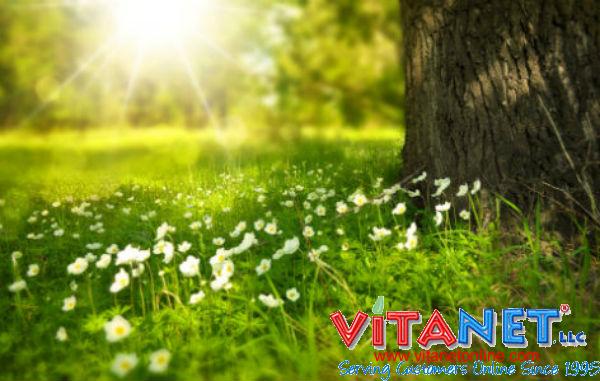

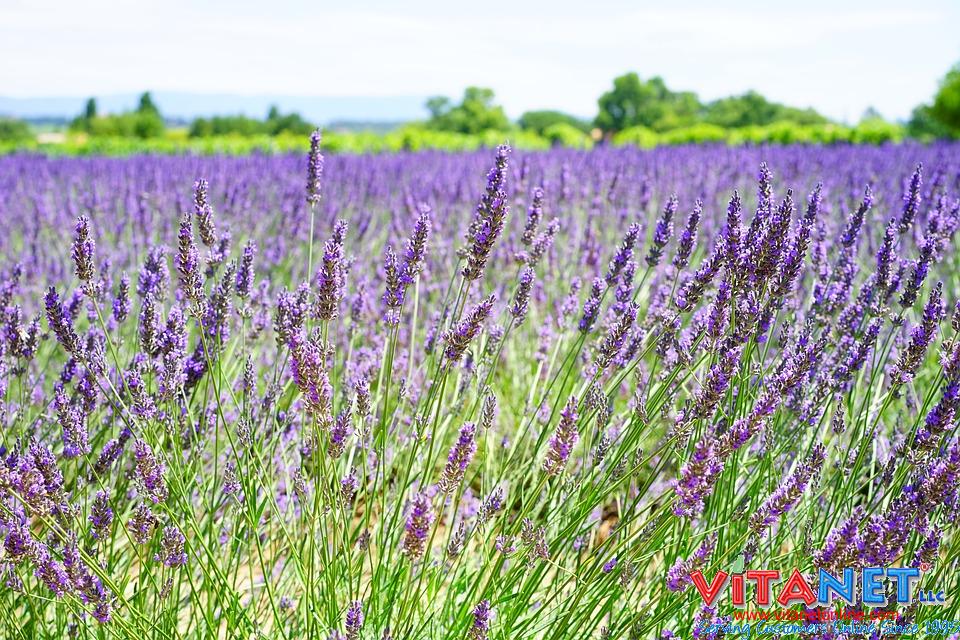


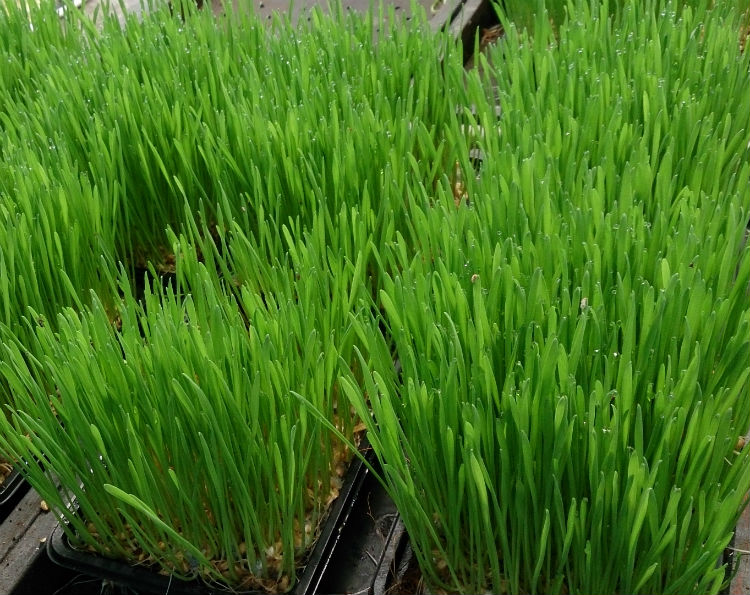
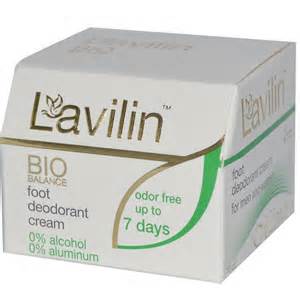 There are many DEODorants in the market but Lavilin is among the reputed DEODorants. It is a gentle and effective DEODorant.
There are many DEODorants in the market but Lavilin is among the reputed DEODorants. It is a gentle and effective DEODorant.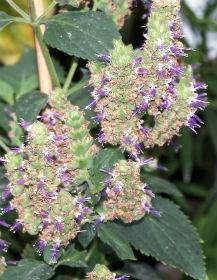 Patchouli oil is normally distilled from the flowers and leaves of a plant known as Patchouli, a bushy herb which is native in Asian. It is famous for its beautiful scent and has been used in perfumes for centuries. It is recently used as an alternative herbal medication for chronic diseases as well as an insect repellent.
Patchouli oil is normally distilled from the flowers and leaves of a plant known as Patchouli, a bushy herb which is native in Asian. It is famous for its beautiful scent and has been used in perfumes for centuries. It is recently used as an alternative herbal medication for chronic diseases as well as an insect repellent.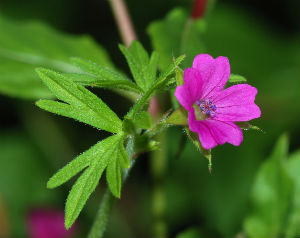 Germanium oil is known to be very beneficial to the body and has been used to treat and prevent various diseases. It is a major material in cosmetics industries due to it soothing ability.
Germanium oil is known to be very beneficial to the body and has been used to treat and prevent various diseases. It is a major material in cosmetics industries due to it soothing ability. 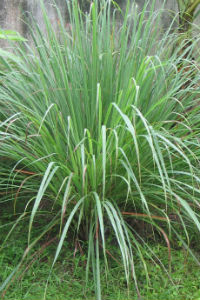 Citronella is a grass that is grown in Asian countries as well as islands in the South Pacific and has a rich and crisp aroma. Citronella essential oil is extracted from the Ceylon and Java variety of the grass. This oil is known to have so many benefits and these include:
Citronella is a grass that is grown in Asian countries as well as islands in the South Pacific and has a rich and crisp aroma. Citronella essential oil is extracted from the Ceylon and Java variety of the grass. This oil is known to have so many benefits and these include: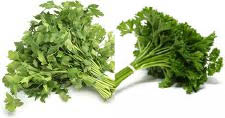
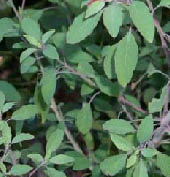 Planetary Herbals is pleased to introduce Cilantro heavy metal detox, a unique herbal cleansing formula for defense against today’s environmental toxins. The herbs in Cilantro heavy metal detox are known to bind to heavy metals, helping to clear them from the body. Chlorella is added to increase the chelating and cleansing actions of cilantro. This combination also provides effective antioxidant support for overall cell health.
Planetary Herbals is pleased to introduce Cilantro heavy metal detox, a unique herbal cleansing formula for defense against today’s environmental toxins. The herbs in Cilantro heavy metal detox are known to bind to heavy metals, helping to clear them from the body. Chlorella is added to increase the chelating and cleansing actions of cilantro. This combination also provides effective antioxidant support for overall cell health. 


